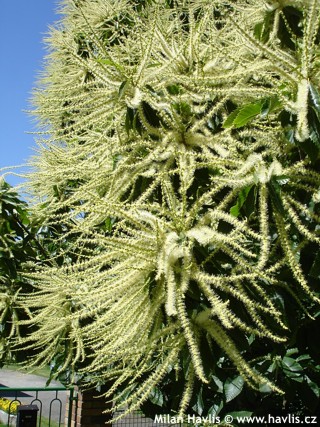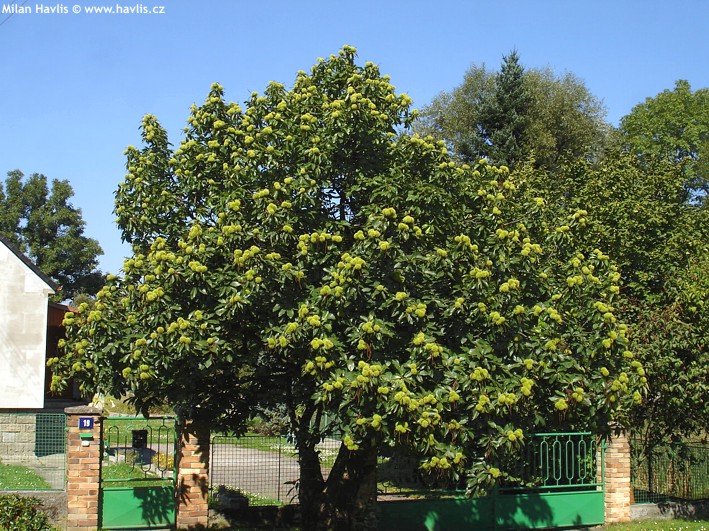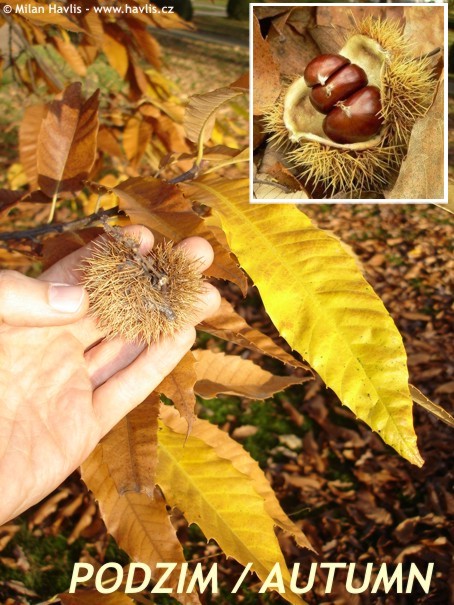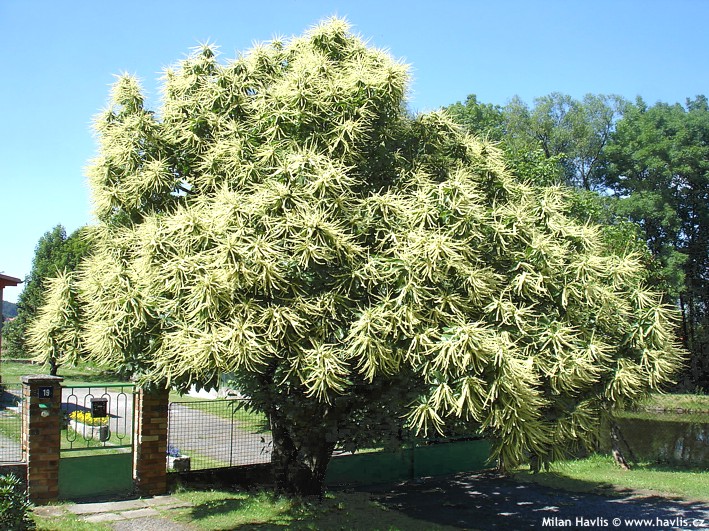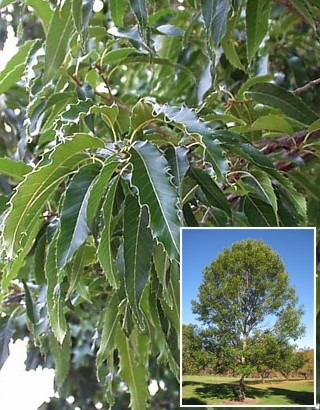Castanea sativa + ODRÙDY sweet chestnut
Castanea
Sweet chestnut originates in the Balkans and Southern Europe and has become very popular mainly in English parks where centenary specimens stand in their gracious beauty in the middle of neat lawns.
Sweet chestnut is cultivated for several beautiful features. The deciduous leaves are deep green, elliptic to oblong, up to 20 cm long, distinctly serrated and glossy, turning deep golden yellow in autumn. Flowers are creamy beige catkins that appear in July. They release a rather strong fragrance (especially in the evening) which may be disagreeable for someone. Fruit – chestnuts are hidden in prickly burrs that are bright green first, grading to yellowish-brown in the autumn.
Varieties:
Belle Epine - French variety, good taste, produces fruit from 5th or 6th year, great pollinator, less demanding as to soil and climate conditions.
Dorée de Lyon - French variety, excellent fruit, 8-10m only, prefers warmer regions.
Marigoule - a cross between European and Japanese chestnut, hardy to -29°C, good fruit, early variety, partially self-fertile, needs a hot summer to produce good fruit, ultimate size 12-15m.
Vincent van Gogh - dwarf variety, rather ornamental, 1.8m in 10 years, slightly undulate leaves and lightly twisted branches, produces fruit, too.
This tree grows very slowly forming a wide and low, mushroom-head, dense crown. Though it can be sizeable when fully mature it can easily be pruned to maintain a garden-acceptable size. It is tolerant of all soil types if well drained, once established it can withstand severe drought, but will not grow in shade. Fully hardy t o -29°C (USDA zone 5).
Last update 04-01-2009.

3 927 Kè

7 947,5 Kè

9 078 Kè

20 060 Kè
Goods are shipped all over Europe. For Russia and U.K. and for further details please read about SHIPPING OPTIONS HERE.
Are you interested in a serious discount for orders NOV-FEB? Check your options here.
THE PRICES INCLUDE VAT of 15%. For quick conversion you can use 1 CZK = approx. 0.04 EUR
- STANDARD QUALITY - Plants of this group are 1st class quality with number of branches and overall density adequate to their size and age, considering they were container grown.
- DE LUXE QUALITY - This label guarantees a luxurious quality of manually selected plants that, compared to their height and age, are exceptionally dense and beautiful.
- EXTRA - These plants are usually mature and bigger specimens with exceptional overall appearance.
- STANDARD (as described in the plant form) means a tree with a trunk of 190-210 cm and a crown at the top, unless specified differently. The commercial size for trees is their girth measured in the height of 1m from ground.
- HOBBY - These plants are of the same quality as our standard-quality plants but younger and therefore cheaper.
- SHRUB - a woody plant with branches growing bushy from the ground level.
- HALF-STANDARD or MINI-STANDARD - a small tree with shorter trunk, its size is usually specified.
- FEATHERED - These are trees with branches growing already from the base of the trunk and up along the stem.
- GRASSES and PERENNIALS - Sizes given usually read the diameter of the pot or the clump, as specified.

































